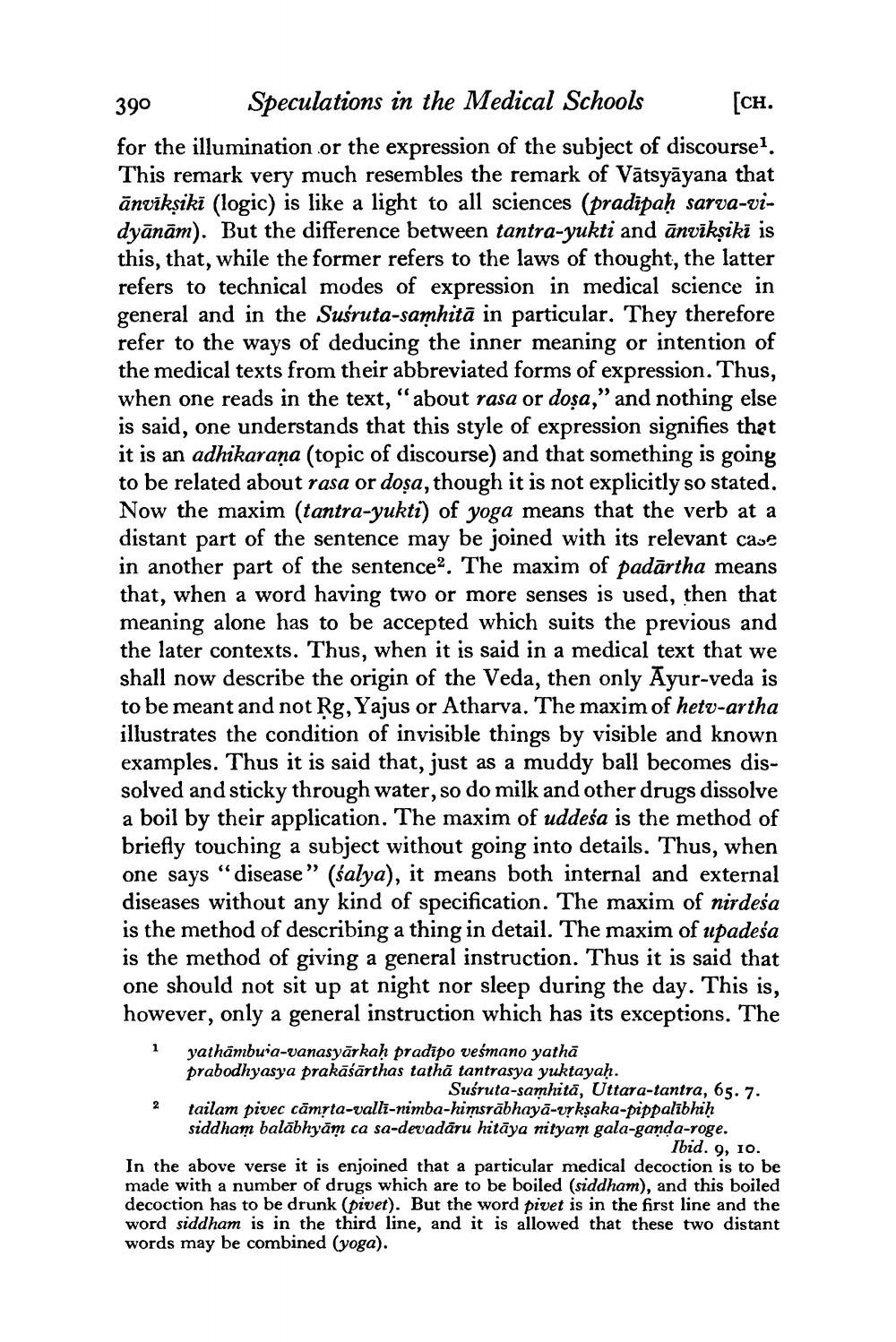________________
390 Speculations in the Medical Schools [CH. for the illumination or the expression of the subject of discoursel. This remark very much resembles the remark of Vātsyāyana that ānvikșiki (logic) is like a light to all sciences (pradipaḥ sarva-vidyānām). But the difference between tantra-yukti and ānvikșiki is this, that, while the former refers to the laws of thought, the latter refers to technical modes of expression in medical science in general and in the Suśruta-samhitā in particular. They therefore refer to the ways of deducing the inner meaning or intention of the medical texts from their abbreviated forms of expression. Thus, when one reads in the text, “about rasa or doșa," and nothing else is said, one understands that this style of expression signifies that it is an adhikaraņa (topic of discourse) and that something is going to be related about rasa or doşa, though it is not explicitly so stated. Now the maxim (tantra-yukti) of yoga means that the verb at a distant part of the sentence may be joined with its relevant case in another part of the sentence. The maxim of padārtha means that, when a word having two or more senses is used, then that meaning alone has to be accepted which suits the previous and the later contexts. Thus, when it is said in a medical text that we shall now describe the origin of the Veda, then only Ayur-veda is to be meant and not Rg, Yajus or Atharva. The maxim of hetv-artha illustrates the condition of invisible things by visible and known examples. Thus it is said that, just as a muddy ball becomes dissolved and sticky through water, so do milk and other drugs dissolve a boil by their application. The maxim of uddeśa is the method of briefly touching a subject without going into details. Thus, when one says "disease" (salya), it means both internal and external diseases without any kind of specification. The maxim of nirdesa is the method of describing a thing in detail. The maxim of upadeśa is the method of giving a general instruction. Thus it is said that one should not sit up at night nor sleep during the day. This is, however, only a general instruction which has its exceptions. The
yathămbu'a-vanasyārkaḥ pradīpo veśmano yathā prabodhyasya prakāśārthas tathā tantrasya yuktayah.
Susruta-samhita, Uttara-tantra, 65. 7. tailam pivec cāmrta-vallī-nimba-himsrābhayā-vrkşaka-pippalībhiḥ siddham balābhyām ca sa-devadāru hitāya nityam gala-ganda-roge.
Ibid. 9, 10. In the above verse it is enjoined that a particular medical decoction is to be made with a number of drugs which are to be boiled (siddham), and this boiled decoction has to be drunk (pivet). But the word pivet is in the first line and the word siddham is in the third line, and it is allowed that these two distant words may be combined (yoga).




